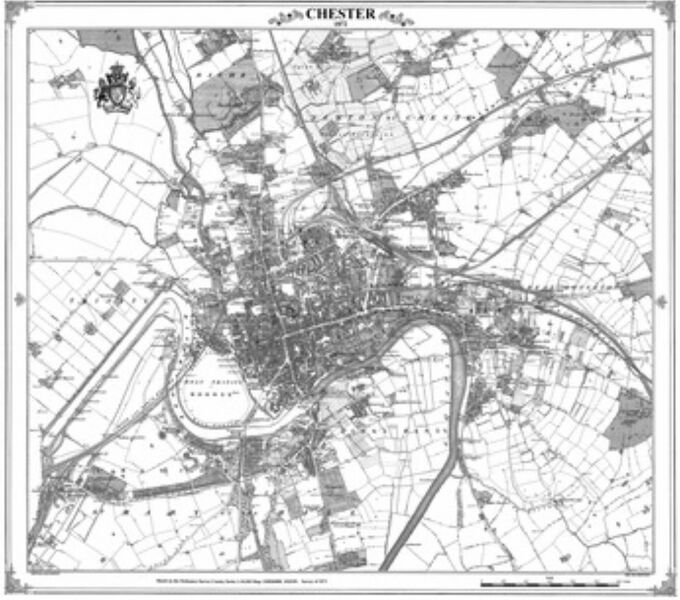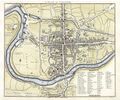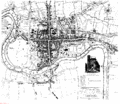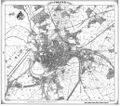1872 OS Map
Overview
Natural increase ensured that Chester's population rose continuously, but between 1841 and 1871 and again in the 1890s it was augmented by migration. Large numbers of Irish people came to Chester during the Famine, in 1851 forming 7.3 per cent of the population. The Irish were, nevertheless, a minority among the newcomers to Chester. In 1851 over 30 per cent of the city's population had come from the surrounding counties and another 20 per cent from further afield in Great Britain. The proportions had not altered greatly by 1911.
Chester's restricted size in the later 19th century gave it great social variety over very small areas. Where people lived was, nevertheless, conditioned to some extent by the jobs they did, and there were distinct variations in the occupational structure of different parts of the city. Within the walls the inhabitants of the main streets and Rows still included a strong proprietorial and professional element, but most of the intramural population were artisans, unskilled, or engaged in shop work. In 1861 there were still sizeable enclaves within the walls, particularly on the western side, which were inhabited by the wealthy élite, and it could be said of the cathedral precinct that "much of the city's life lapped against but did not enter this area". The better off, however, were tending to desert the city centre by then, and shopowners increasingly abandoned accommodation over their premises to live in the more salubrious suburbs.
North of the Canal, and especially in Newtown near the railway station, transport and manufacturing workers predominated, each making up nearly a quarter of the labour force. The streets around Garden Lane and Cheyney Road tended to be of low social status, but beyond the fork of Liverpool and Parkgate Roads lay a wedge of generally high-status residents and their servants. South of the Dee the influence of Saltney meant that manufacturing workers, labourers, and others working in industry made up over 40 per cent of the workforce, concentrated in Saltney itself and Handbridge. The genteel suburbs of Queen's Park, Hough Green, and Curzon Park were home to upper-middle class and professional residents whose obtrusive properties belied their quite small numbers.
Features
In 1872, Chester still just about retained its roots as a walled town set in a defensive crook of the River Dee. Apart from a large Leadworks, and changing the course of the River Dee, the Industrial Revolution had comparatively little impact on the city. The town was a strategic railway junction and distribution centre, as well as a rolling stock maintenance depot. At either end of the city lie two large buildings, both workhouses. However, with the coming of the railways, the city has begun to expand beyond the confines of the City Walls, especially to the north. There is not yet much development to the south of the River Dee but that will come soon, as the 1852 Suspension Bridge has already been constructed.
History
The roots of Ordnance Survey go back to 1747, when Lieutenant-Colonel David Watson proposed the compilation of a map of the Scottish Highlands to facilitate the subjugation of the clans following the Jacobite rebellion in 1745. From 1850–53, twenty-nine towns were mapped at 1:528 (10 feet to the mile). From 1855 1:500 (10.56 feet to the mile) became the preferred scale. London and some seventy other towns (mainly in the north) were already being mapped at 1:1056 (5 feet to the mile). Just under 400 towns with a population of over 4000 were surveyed at one of these three scales, most at 1:500. Publication of the town plans was completed by 1895.
Sources and Links
- High Res Version (link does not work)
A gallery of Old Maps of Chester
Braun and Hogenberg (1581)
Smith Map (c.1588)
John Speed (c.1610)
Hollar's Map (1660's)
Lavaux Map (1745)
Hunter Map (1789)
Mutlow and StockdaIes Map (1795)
Coles Map (c.1804)
John Webb Map (1833)
Hugh Roberts (1858)



















